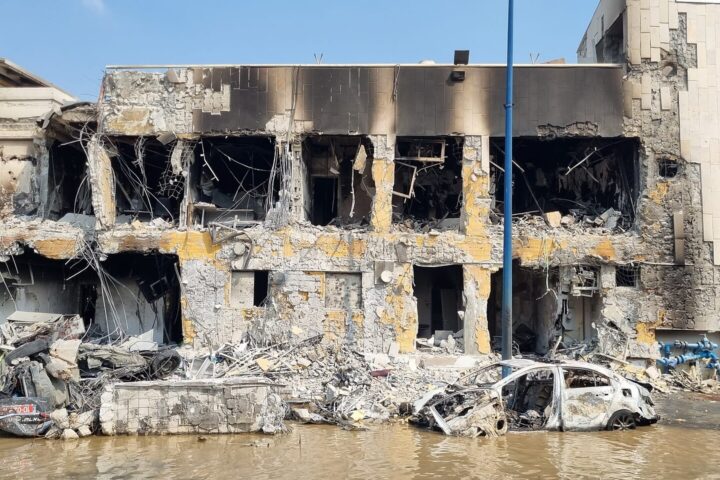.
By Costis Stambolis
When it became obvious back in 2010 that Greece’s financial woes were far more serious and extended than originally perceived and that the mess that the country was in was not entirely due to gross mismanagement of the public sector, a decision was taken by the Troika, i.e the IMF, the ECB and the EU, representing the country’s main creditors, to introduce a massive privatisation programme. The rationale behind this move was that through the large scale disposal of state-owned or controlled enterprises and the commercial utilisation of public property not only would much needed income materialize, which would be used to replenish the government’s coffers and reduce public debt, but also a change of attitude would emerge which would promote private enterprise and help businesses escape from the state’s tight grip.
When the programme was first announced by the Troika in March 2011, the government was accused of complicity to first degree murder in trying to rob the country from its valuable treasures and the country was once again paralysed by repeated nationwide strikes led by a wide variety of militant trade unions. With such negative reception it took the government several months to set up the agency which would undertake the Herculean task of organising the sale of state enterprises and public property. Eventually, the Hellenic Republic Asset Development Fund (HRADF) was tasked with selling up to 50 bln euros in assets by 2015, an over-ambitious target as it was soon realised, that was then revised to raising 19 bln euros by that year. But even that target proved illusive and had to be adjusted to a more sensible 20 bln euros by 2020.
Following a series of delays, false start ups and reduced sales targets compounded by the country’s bloated civil service and bureaucratic inertia, the privatisation effort came to a complete stall by spring 2011. To add insult to injury, the country had to face two national elections within three months which meant further government paralysis and a complete inability in decision making. As the then chief executive of HRADF, Costas Mitropoulos noted at the time, “the level of uncertainty is so high that investors shy away from Greece at the moment”.
By autumn 2011 and much to the Troika’s chagrin, Greek promises to fill budget gaps by selling off state assets appeared to have been completely negated as prospective buyers stayed clear from a country in turmoil and surrounded by a great degree of uncertainty concerning its place in the eurozone.
Eventually, a new management was appointed at HRADF in October 2012 with increased executive powers and soon got down to work revising even further the country’s derailed privatisation programme. According to the latest planning, the new target has been set for 11 bln euros of disposals by 2016 and includes the sale of industrial and commercial companies as well as extensive government real estate holdings in Greece and abroad. As we approach the critical second yearly quarter, two top projects lead the way and, if successful, will have a very positive impact on the whole programme, said HRADF senior officials. These include the sale of a majority share holding in state owned gas company DEPA and its system operator subsidiary DESFA, and the national state lottery OPAP, both considered as jewels of the privatisation process.
Other companies geared up for sale over the coming months include Larco, the largest ferronickel mining company in Europe, a 34% share holding in the country’s top petroleum group Hellenic Petroleum and a substantial holding in state controlled electricity utility Public Power Corporation (PPC/DEH). These companies, together with some substantial land plots in Rhodes and Corfu, are slated for disposal over the next 12 months and if successful could fetch up to 3 bln euros in net proceeds. As far as the real estate assets are concerned, these consist of mostly undeveloped land and consequently they will require some basic investment in infrastructure if they are to achieve their true value, note HRADF sources. And of course this is a difficult proposition at a time of fiscal austerity.
If we are to believe the present Greek government – a three party coalition lead by conservative Antonis Samaras – and the country’s creditors, the privatisation programme forms a cornerstone of the current economic stabilisation programme, part of the EU-IMF second bailout. The trouble is that until now and two years since its inception, Greece’s privatisations have only realised less than 1.6 bln euros from asset sales which inevitably raises the question as to how HRADF will manage to meet its targets and actually contribute a sizeable amount of income and help reduce the budget deficit. HRADF’s new CEO, Professor Takis Athanasopoulos, a well respected economist and ex-vice president of Toyoya Europe, appears optimistic as he explains the considerable amount of preparatory work undertaken during the previous six months and the satisfactory investor response so far for both the DEPA/DESFA and OPAP sales.
“The present programme is full of challenges as we have to deal with a wide variety of assets, a prime example being the sale of a company to develop Hellinikon, the site of the former Athens international airport”, noted Athanasopoulos.
“The next three months are absolutely critical for the programme’s success and I remain convinced that Greece could become an El Dorado for investors if we, both government and stakeholders, move decisively ahead to sell off infrastructure facilities and dormant assets”, he added.
However, Athanasopoulos’s enthusiasm will have to be shared by several other people and state entities if Greece’s ambitious privatisation programme moves back on track.
Costis Stambolis is a regular contributor to the Financial Mirror on commercial and energy issues.







